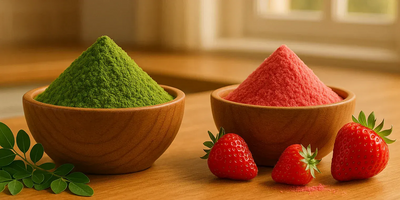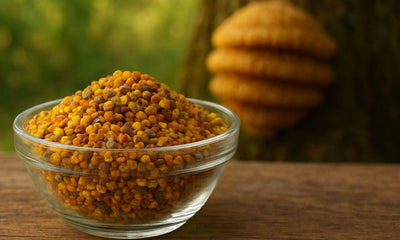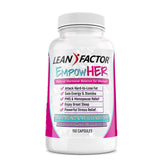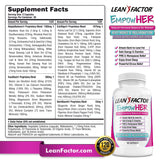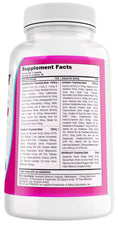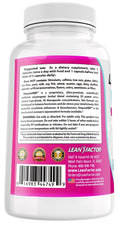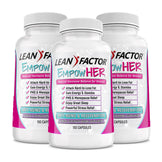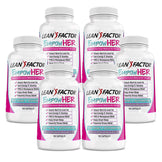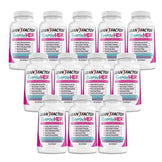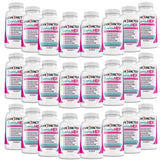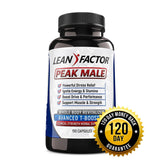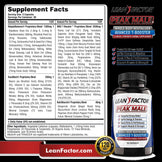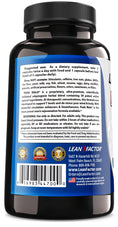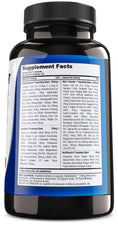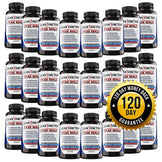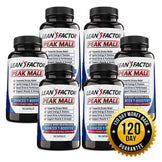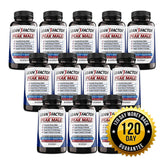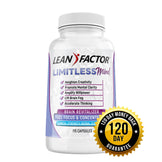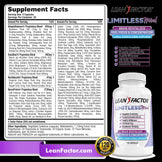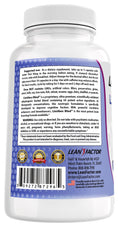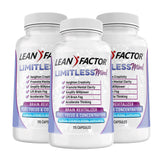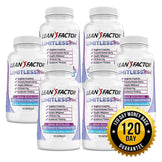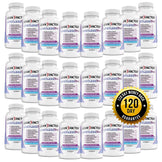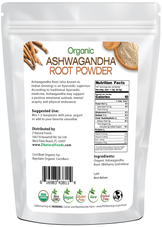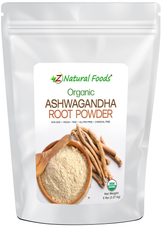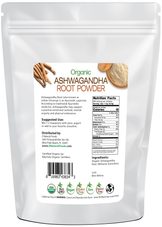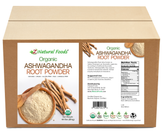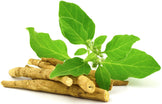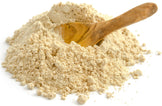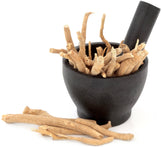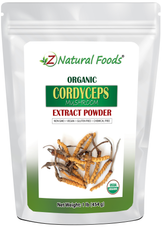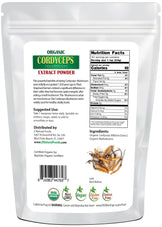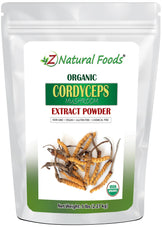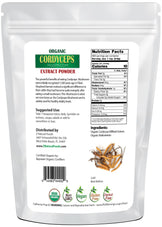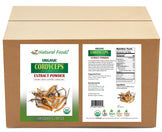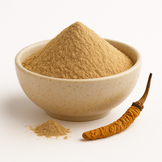Description
Description
If you have ever wondered how adaptogens really work, this is the article for you.
In this article, we will review what adaptogens are exactly, how they work, and what makes them so incredibly unique.
How do adaptogen herbs really work?
Adaptogenic herbs work through the body’s master control systems, including the HPA Axis (Hypothalamic-Pituitary-Adrenal Axis), the Sympatho Adrenal system, aka “fight or flight”, and on a “cellular level” by supporting protein structure.
But before we dig into precisely how adaptogens work, let’s define what makes an adaptogen an adaptogen, and review a list of the only “true” adaptogens.
Let’s get started.
The 3 Essential Criteria that make an herb an adaptogen herb
Reviewing essential facts about the criteria that define an adaptogen is vital to understand how adaptogen herbs really work.
The three essential criteria are as follows:
- Adaptogens must be nontoxic at a clinical dosage
- Adaptogens must increase the resistance of the hormonal and immune systems to all kinds of stressors through a nonspecific physiological response.
- Adaptogens must normalize body function no matter how external stressors have altered them.
It may surprise you that many herbs not classified as adaptogens can (on some level) fulfill the above criteria, but there are only nine “true” adaptogens:
- Asian Ginseng
- American Ginseng
- Ashwagandha (go here for more information about ashwagandha)
- Eleuthero
- Schisandra
- Rhodiola
- Rhaponticum
- Shilajit
- Cordyceps (go here for more information about cordyceps)
How adaptogens really work through the body’s master control systems
Because many plants not considered true adaptogens can fulfill the above criteria, we have learned that what makes a plant an actual adaptogen is that it must work through one or both of the body’s master control systems.
Let’s briefly review these systems:
- The HPA Axis (Hypothalamic-Pituitary-Adrenal Axis) is a complex system of neuroendocrine pathways and feedback loops that maintain and support homeostasis in response to chronic stress.
The HPA axis is the interface between the endocrine, nervous, immune, digestive, reproductive, and cardio systems.
- The SAS (Sympatho Adrenal system, aka fight or flight) is a complex system that connects the sympathetic nervous system to the adrenal medulla.
In simple terms, it is our fight-or-flight response.
A triggered response floods our system with adrenalin and releases the hormones epinephrine and norepinephrine from the adrenal medulla. This response increases blood pressure, blood sugar, and heart rate and suppresses digestion. This releasing of hormones and redistribution of blood allows the mind and body to respond and survive.
And…
- In the early 2000’s we learned through preliminary animal and in vivo research that adaptogens also work on a “cellular level.” It seems that adaptogens may support the up-regulation of what are known as “molecular chaperones,” like heat shock proteins.
Molecular chaperones are any protein that interacts with, stabilizes, or helps another protein to maintain its structure. Heat shock proteins are known for their role in protein maturation, re-folding, and degradation. They are upregulated in the presence of stressful stimuli.
The body is signaled that stress is coming, so to prepare, it increases the production of these remarkable compounds, which inhibit addiction, reduce pain, prevent misfolding of proteins, and increase neuroplasticity, just to name a few. Stress also increases the production of stress hormones like cortisol.
Human research has shown that adaptogens may also support healthy cortisol levels and prevent elevated cortisol-produced mitochondrial dysfunction.
In one study, Effects of Ashwagandha on stress manifested anxiety: The treatment group showed a “significant reduction” in “scores on all stress assessment scales.” An even more impressive result was the reduction in serum cortisol levels. Both results were compared to a placebo group (1).
In another study; Effects of Ashwagandha on the relationship between stress and weight management: Ashwagandha produced a “32.74% reduction in PSS scores (”perceived stress scale), “A 22.2% reduction in serum cortisol” and “ A significant reduction in TFEQ (Three-factor eating questionnaire) scores for uncontrolled and emotional eating behavior” all compared to a baseline placebo group. The results suggest that for those who have trouble maintaining a healthy body weight due to the effects of “chronic stress,” Ashwagandha has very supportive qualities. (2)
According to a review titled Sleep Disorders in Mitochondrial Disease it was stated, “Sleep-disordered breathing is the main sleep disorder reported in mitochondrial disease, OSA (obstructive sleep apnea) and CSA (central sleep apnea) are more frequently associated with patients characterized by prevalent involvement of skeletal muscle and the central nervous system.” (3)
Conditions like Epstein bar and chronic fatigue are considered conditions of chronic sleep disorders and mitochondrial dysfunction ailments. It is both well-known and extremely well-researched that adaptogens have a direct positive effect on stress-induced cortisol elevation. Therefore, the use of adaptogens can be quite helpful in supporting conditions of mitochondrial dysfunction.
Finally, a study looking at the effects of Rhodiola on stress-related fatigue concluded that repeated administration of R. ROSEA extract SHR-5 exerts an anti-fatigue effect that increases mental performance, particularly the ability to concentrate, and decreases cortisol response to awakening stress in burnout patients with fatigue syndrome. (4)
Adaptogens are NOT a one size fits all concept
If you require using adaptogens, it is essential to look at the individual, not the condition.
Not every adaptogen is suitable for everyone. Like all other plant medicines, individual adaptogens have their unique qualities. They can be nourishing, warming or cooling, stimulating or calming, moistening or drying in nature.
Depending on the species of a particular adaptogen and where it’s grown can also affect one’s results. If you are doing this on your own, look at each adaptogen and (based on the above qualities) evaluate if it makes sense for you.
A great example is stimulating adaptogens. If you lack mental and physical stamina, this type of adaptogen may be a good choice.
The Difference Between Red Ginseng vs Rhodiola (Example)
For example, Red Ginseng and Rhodiola are the most stimulating adaptogens but work quite differently. Red ginseng is warming but also deeply nourishing. The nourishing quality helps balance the stimulating quality.
On the other hand, Rhodiola is not nourishing at all. It is very stimulating and drying. Therefore, (as an individual entity) Rhodiola may not be a good choice for those who get easily overstimulated or suffer from a drying condition known as a Yin deficiency in traditional Chinese medicine. It is important to note that while Siberian Rhodiola seems to exacerbate those issues, Tibetan Rhodiola does not. Therefore, the devil is in the details.
Thankfully all systems of herbal medicine use complex formulas that contain companion herbs that support and balance the effects of each herb included in that formula. So, if you are seeing an herbal practitioner, you will likely not be given individual herbs.
Adaptogens are the most well-researched, well-respected, time-tested, and proven category of herbs around the world to support and optimize longevity and well-being through the support of nonspecific physiological responses.
If used appropriately, adaptogens can be the modern-day savior and allow us to live happier and healthier lives. With all we know, there is still much that we are learning about these robust plants.
References
- A prospective, randomized, double-blind, placebo-controlled study of the safety and efficacy of a high-concentration full-spectrum extract of Ashwagandha root in reducing stress and anxiety in adults. Chandrasekhar, K., Kapoor, J., & Anishetty, S. (2012). Indian journal of psychological medicine, 34(3), 255.
- Body Weight Management in Adults Under Chronic Stress Through Treatment With Ashwagandha Root Extract: A Double-Blind, Randomized, Placebo-Controlled Trial. Choudhary, D., Bhattacharyya, S., & Joshi, K. (2017). Journal of evidence-based complementary & alternative based medicine, 22(1), 96-106.
- Sleep Disorders in Mitochondrial Disease. Valerio Brunetti, Giacomo Della Marca, Serenella Servidei, and Guido Primiano (2021). Current Neurology and Neuroscience Reports. ncbi.nlm.nih.gov
- A randomized, double-blind, placebo-controlled, parallel-group study of the standardized extract shr-5 of the roots of Rhodiola Rosea in the treatment of subjects with stress-related fatigue. Erik M Olsson, Bo von Scheele, Alexander G Panossian. Plant med (2009) https://pubmed.ncbi.nlm.nih.gov/19016404/

